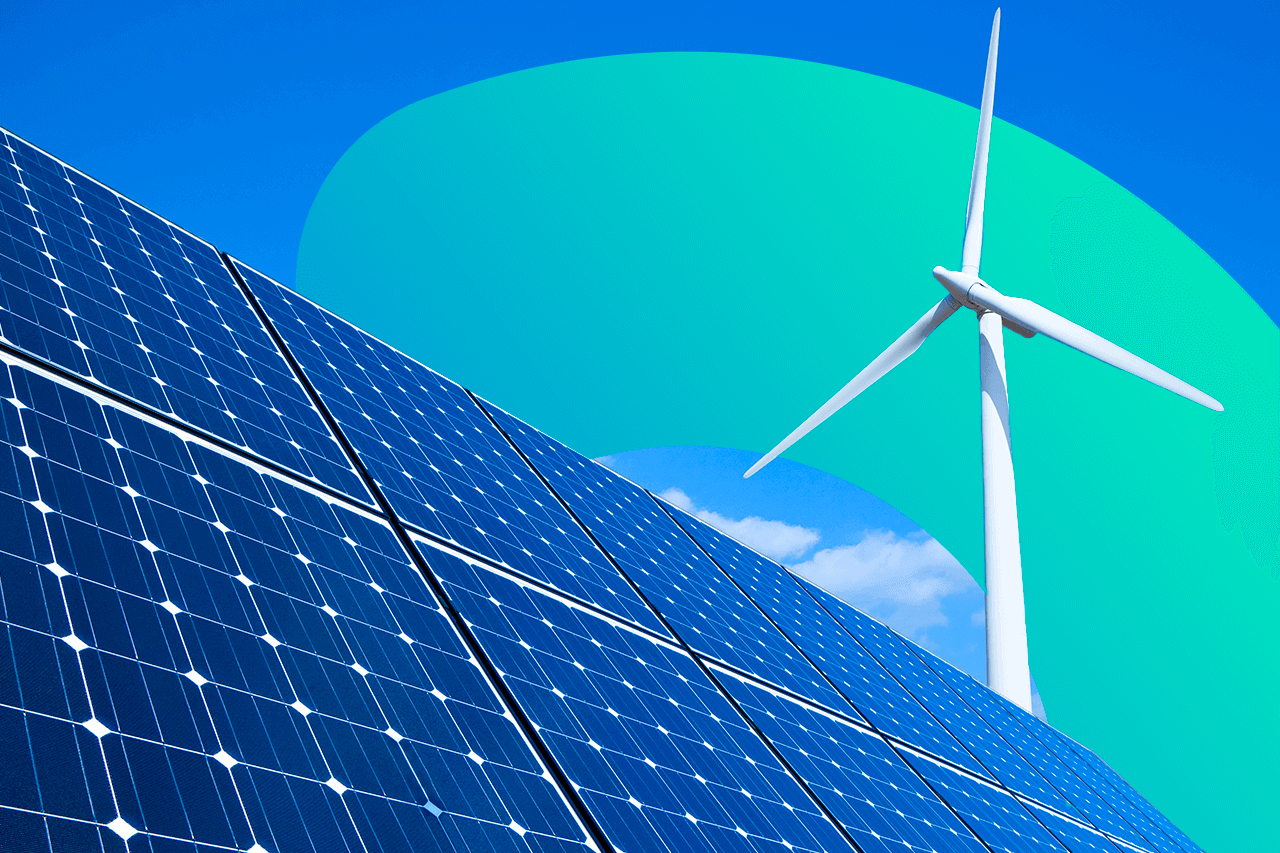
The Complete Guide to Renewable Energy in America
December 24, 2018 - Emily Newton
Revolutionized is reader-supported. When you buy through links on our site, we may earn an affiliate commission. Learn more here.
Renewable energy in America is a hot topic these days, but you may have heard the phrase “green energy” without understanding what it means. What is green energy? Here is the complete guide to renewable energy in America — the seven main types of renewable energy production, and how they are in use in the United States.
Traditional Power Generation
Most of the power in the United States right now comes from burning fossil fuels. While it might be a cost-effective means for power generation, it also generates millions of metric tons of carbon dioxide every year. Is it possible to step away from these dinosaur-burning power plants to adopt an eco-friendly alternative? Let’s take a closer look at some examples of green energy sources in the U.S.
Renewable Energy Examples

Renewable energy in America may not get as much attention as it could, but a heightened push toward environmentally friendly solutions that use fewer finite resources will increasingly turn the spotlight on these green sources.
1. Hydroelectric
Hydroelectric power is probably the earliest form of renewable energy. Humans have used waterwheels to generate various kinds of energy since the early third century BCE, and they have formed the foundation for modern hydroelectric power. Today, we use dams to create hydroelectric power. Water flowing past turbines in the dam generates electricity. Your geographic location limits hydroelectric power, but in areas where it is available, it is the most energy-efficient type of green energy currently available.

Currently, about 10 percent of the power generated in the United States comes from hydroelectric power plants. The U.S. is also second only to Canada regarding hydroelectric power production.
2. Ocean
The ocean can generate two different types of energy. The first is thermal energy — collecting the heat of the sun as it lands on the sea. With 70 percent of the Earth’s surface covered by water, this is a vast untapped resource.

The second type of energy is mechanical — harnessing the waves or the movement of the tides. Towns and cities in coastal areas can potentially tap into the power of these waves. There isn’t a lot of information on the amount of ocean power being generated because users have not widely adopted it yet, but the theoretical energy generation for this type of green energy is upwards of 2.64 trillion kilowatt hours. This power type will only be available to cities that are on the coast, though, since the power would be more difficult to transmit inland.
3. Geothermal
Among these renewable energy examples, geothermal energy uses the heat the Earth generates to create electricity. It can also heat buildings and water, or even keep a building cool in the summer. You don’t necessarily need to be close to a geothermal vent or a volcano. A heat pump located just 10 feet below the surface can generate heat for a single nearby building.

Only about 3 percent of the energy generated in the United States comes from geothermal power. That isn’t due to a lack of power sources, but a lack of adoption.
4. Wind Power
Wind power, as its name suggests, uses the power of the wind to spin a turbine that, in turn, generates power. Traditional wind turbines are large and take up a lot of space, but new technologies are making this technology more accessible to adapt in areas where space is at a premium.

Wind turbines generate roughly 8 percent of the U.S.’ power supply in various locations across the country. South Dakota uses wind turbines to create more than one-quarter of their total power supply. Texas alone produces more than 20 percent of the total wind energy generated in the United States.
5. Hydrogen

This type of power is currently limited to powering cars and other small engines. Hydrogen is the most abundant element in the universe, but is only found on Earth in the form of more complex molecules like water and hydrocarbons that form things like natural gas and crude oil. Hydrogen power cells can run vehicles, and could potentially provide a replacement for gasoline and diesel-powered vehicles once it becomes more widely adopted.
6. Solar
Solar energy has become the most popular form of green energy in recent years. In essence, property owners can place specially designed panels where they can collect the sun’s rays and convert that sunlight into power for the home or business. In 2017, solar power generated roughly 1 percent of the country’s total power generation.

The use of solar power depends mainly on your location. If the building doesn’t get enough usable solar hours during the year, the energy it generates won’t offset the cost of installing the panels in the first place. Many states are offering tax incentives to make installing solar panels more affordable to encourage home and business owners to switch to solar energy.
7. Bioenergy
Do you have a compost pile in your yard? If so, you’re already familiar with the concept of bioenergy. Biofuel comes from biomass waste — plants, cooking oil and other food waste — to create a renewable fuel source that can burn in diesel engines and generators. Ethanol, the E you see at the gas pump, is another type of biofuel derived from corn.
Biofuel doesn’t come from harnessing a natural process, but it doesn’t rely on non-renewable resources like petroleum either, making it a green power alternative. Many cities have started switching their public vehicles from traditional diesel fuel to biofuel to make them an even greener option.
The Future of Renewable Energy in America
For now, burning coal and natural gas remain the primary form of power generation, but that is slowly changing. Experts estimate if the growth of solar continues as it has in the last few years, more than 10 percent of the country’s energy will come from solar power by 2020. In 2015, power generation in the United States created more than 1.925 million metric tons of CO2, which is less than it has been in previous years.
It may be entirely possible to power the planet — or even just the country — with green energy, but it will take time and a willingness to adopt new technologies and step away from traditional power methods.
Revolutionized is reader-supported. When you buy through links on our site, we may earn an affiliate commission. Learn more here.
Author
Emily Newton
Emily Newton is a technology and industrial journalist and the Editor in Chief of Revolutionized. She manages the sites publishing schedule, SEO optimization and content strategy. Emily enjoys writing and researching articles about how technology is changing every industry. When she isn't working, Emily enjoys playing video games or curling up with a good book.







